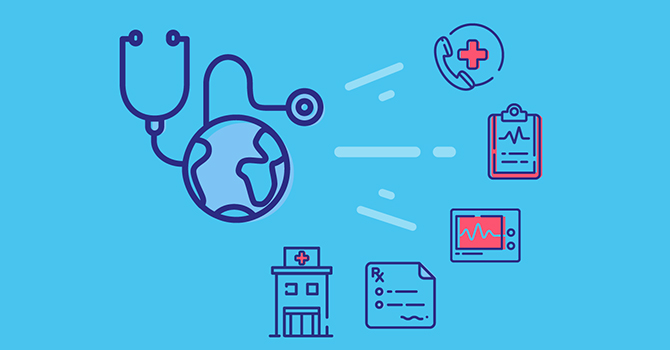A Comprehensive Guide on Just How Healthcare RCM Works to Improve Billing and Collections
Browsing the intricacies of healthcare earnings cycle administration (RCM) is essential for carriers intending to improve their payment and collections procedures. The overview unpacks the intricacies of RCM, from client registration to accounts receivable monitoring, providing insights into optimizing each step. Incorporating advanced technology and standard treatments can dramatically minimize insurance claim rejections and increase repayment cycles. Yet, real difficulty hinges on seamlessly merging these elements to increase capital. As we check out the core elements and methods that drive performance, one question remains: just how can healthcare entities ideal position themselves to thrive monetarily in an ever-evolving market?
Comprehending Earnings Cycle Management
RCM is a vital administrative feature that encompasses the entire monetary procedure of person treatment, from the initial appointment establishing to the last repayment of the equilibrium. It is an intricate procedure developed to identify, gather, and manage the revenue from the services given to patients.
The RCM process begins when an individual routines a visit and expands through the client's treatment trip, including billing and collections. A crucial goal is to decrease the time in between supplying a solution and obtaining repayment, hence improving the organization's monetary health and wellness. RCM includes various features such as individual registration, insurance confirmation, charge capture, coding, asserts entry, payment uploading, and handling charms and denials.
Trick Parts of RCM
In the world of Profits Cycle Management (RCM), recognizing its key parts is essential to achieving monetary performance within healthcare organizations. RCM is a comprehensive procedure that includes numerous phases, each vital to making certain efficient invoicing and collections. The main parts consist of client registration, insurance coverage verification, charge capture, coding, case entry, settlement posting, and accounts receivable management.


As soon as coded, cases are submitted to payers, where accuracy is paramount to prevent denials or hold-ups - Healthcare RCM. Payment posting involves tape-recording the obtained payments, which enables the reconciliation of accounts. Finally, accounts receivable management concentrates on tracking and attending to unsettled claims, ensuring timely follow-up and resolution
Each component of RCM is adjoined, and inefficiencies in any kind of component can interrupt the entire cycle. Therefore, understanding these aspects is essential for health care service providers to maximize income and improve their monetary health and wellness.
Methods for Reliable Payment
Standardizing billing procedures across the organization is one more key method. Developing clear guidelines for documents, coding, and submission helps maintain consistency and conformity with governing demands. Educating team routinely on these treatments ensures every person is current with the current changes in billing codes and payer plans.
Precise fee capture is vital in stopping earnings leak. Implementing routine audits and monitoring systems enables the recognition and modification of disparities before they impact earnings. Furthermore, preserving open lines of interaction with payers assists to promptly resolve any disputes or misconceptions that may occur.

Last but not least, interesting people early in the payment procedure by providing clear quotes and educational materials about their financial obligations can significantly lower complication and improve payment timeliness. These strategies jointly add to a more effective and financially healthy payment system.
Enhancing Collections Processes
A durable collections procedure is crucial for keeping monetary security within healthcare companies. Offered the complexities of medical billing and the selection of payer requirements, improving the collections process involves executing strategic actions that ensure accurate and timely payment of services rendered. Central to this is the use of modern technology to automate and simplify procedures, decreasing manual mistakes and improving efficiency. Automation devices can aid in tracking insurance claim conditions, sending out prompt reminders to individuals, and taking care of look these up rejections extra properly.
Training staff to recognize the subtleties of insurance policy policies and payment codes is similarly necessary. This knowledge empowers them to address invoicing inconsistencies rapidly and interact properly with people concerning their monetary responsibilities. Additionally, transparent and clear patient communications are crucial. Giving comprehensive explanations of costs and providing adaptable layaway plan can increase client satisfaction and prompt repayments.
Routine audits of the collections process ought to be performed to recognize locations for improvement and make sure compliance with laws. By assessing information, medical care companies can determine trends, prepare for possible problems, and adapt approaches as necessary (Healthcare RCM). Ultimately, a well-enhanced collections process not just supports financial health and wellness however additionally adds to a much more smooth experience for people and personnel alike
Optimizing Income Streams
Structure upon the foundation of a strong collections process, healthcare organizations can additionally boost their monetary stability by purposefully maximizing profits streams. This includes a multi-faceted technique, starting with an extensive evaluation of existing revenue sources to identify ineffectiveness and locations for development. Using advanced data analytics tools allows organizations to obtain understandings right into payer mix, patient demographics, and solution use patterns, enabling data-driven decisions that boost profits capture.
Applying automated billing systems can dramatically reduce mistakes and expedite insurance claims refining, guaranteeing that revenue is gathered much more efficiently. In addition, maximizing payer agreements with normal negotiations can boost repayment rates and terms, straight impacting the lower line. Expanding solution offerings, such as incorporating telehealth or health care, can additionally attract a broader client base, hence boosting profits possibility.
An additional vital part is boosting patient involvement and fulfillment, as satisfied patients are more probable to abide by treatment plans and make prompt payments. Offering adaptable repayment choices and transparent invoicing methods can improve collections and foster patient commitment. Healthcare RCM. By adopting these methods, healthcare organizations can create an extra resistant financial structure, making certain sustained development and stability in an ever-changing market landscape
Final Thought
To conclude, medical care Earnings hop over to here Cycle Administration (RCM) plays an important role in optimizing invoicing and collections procedures by incorporating crucial components such as patient registration, insurance policy verification, charge capture, coding, declares entry, and accounts receivable monitoring. By utilizing innovative innovation, systematizing treatments, and cultivating person interaction, health care providers can substantially reduce claim rejections, increase settlement cycles, and improve cash money circulation. This thorough method to RCM inevitably causes boosted monetary effectiveness and sustainability for healthcare organizations.
The RCM process begins when a patient schedules a visit and extends with the individual's care journey, consisting of billing and collections.Another crucial element is improving patient interaction and complete satisfaction, as satisfied individuals are more likely to adhere to treatment strategies and make timely settlements. Offering adaptable repayment choices and clear billing practices can boost collections and foster client commitment.In verdict, medical care Revenue Cycle Management (RCM) plays a vital function in enhancing invoicing and collections processes by incorporating key components such as person enrollment, insurance coverage verification, fee capture, coding, claims entry, navigate to this site and accounts receivable monitoring. By employing advanced innovation, systematizing treatments, and cultivating individual involvement, medical care service providers can dramatically minimize case denials, speed up repayment cycles, and improve money circulation.
Comments on “Leading Healthcare RCM Methods for Better Financial Performance”